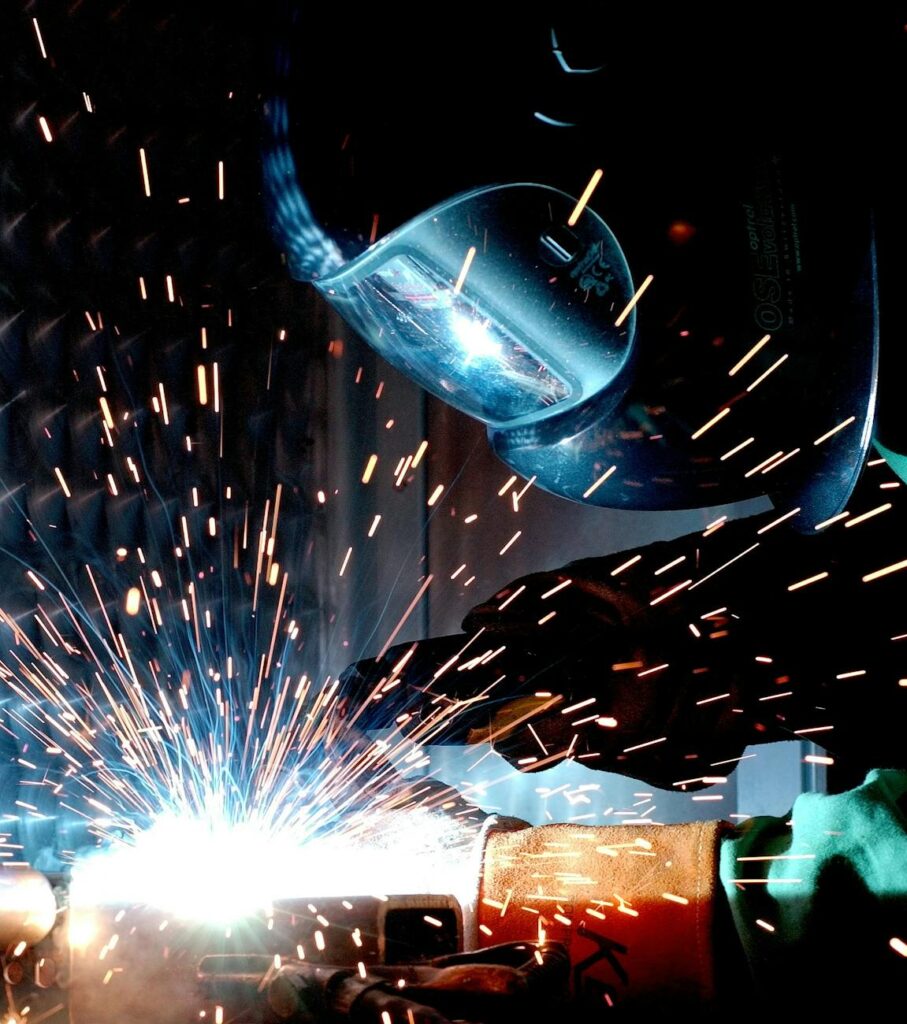Learning to weld offers a rewarding journey, unlocking numerous possibilities in the fabrication and construction fields. This skill, like any craft, demands dedication. A beginner must cultivate patience, practice consistently, and develop meticulous attention to detail to sidestep frequent errors. Mastering welding can significantly enhance one’s craftsmanship and professional opportunities.
This article will explore some of these mistakes to help beginners navigate the welding process seamlessly. By learning from these errors and following the welding safety tips, they can enhance their welding abilities and accomplish better results.
1. Neglecting Safety Precautions
One of newcomers’ most significant mistakes when learning to weld is disregarding safety measures. Welding involves handling high temperatures, molten metals, and potentially harmful fumes. Therefore, it is crucial to wear appropriate protective gear, such as a welding helmet with a shade lens suitable for the chosen welding process.
Additionally, ensure proper ventilation in your workspace by working in well-ventilated areas or setting up extraction fans if necessary. Remember to have fire extinguishing equipment readily available in case of accidents. It’s also important to ensure that all individuals in the workspace are familiar with the location of this equipment and understand how to use it properly in case of an emergency.
2. Inadequate Cleaning and Preparation
Welding joints with insufficiently cleaned surfaces is another frequent blunder beginners make. Metals should be free from contaminants such as rust, paint, and grease before being welded together effectively.
Make sure to clean the surfaces meticulously using appropriate tools, such as wire brushes or grinders, for tougher deposits. This step prevents poor bonding and enhances the strength of your welds, ultimately resulting in successful welding projects.
3. Ignoring Proper Electrode Selection
Choosing the correct electrode or filler material dramatically affects the quality of your welds. When selecting an electrode, consider factors like metal type, thickness, and desired joint strength.
Using mismatched electrodes can result in weak joints prone to cracks or failures under stress. Hence, beginners must educate themselves about electrode types and consult industry experts or reference guides for proper selection advice.
4. Neglecting Welding Position Techniques
The welding position significantly impacts the quality and effectiveness of your welds. It is crucial to adjust your welding technique based on the joint’s position, such as flat, horizontal, vertical, or overhead.
Improper positioning can lead to uneven penetration, excessive spatter, and weak joints overall. Practice and master different positions to ensure competent welds in all scenarios.
5. Rushing the Welding Process
Patience is the key to successful welding. Rushing through the process often leads to shoddy artistry and faulty welds. Beginners focus more on completing projects quickly and overlook essential aspects like preheating, maintaining proper arc length, or adjusting travel speeds.
Carefully understand the welding parameters recommended for specific metals and choose suitable heat settings accordingly. Pay attention to details that significantly impact weld quality.
6. Improper Weld Parameters
Understanding and correctly setting up your welding equipment significantly impacts your results. Incorrect heat settings can result in burned-through or under-penetrated joints that lack desired structural integrity.
When beginning their journey with welding, newcomers can experiment with various power levels appropriate for specific materials and joint configurations. Equipment calibration should be an ongoing process to ensure optimal performance without compromising safety or effectiveness.
7. Neglecting Joint Prep and Fit-Up
The preparation of welding joints dramatically affects the strength and quality of final welds. Ensure proper fit-up between pieces before initiating a weld to avoid gaps or incorrect alignment, resulting in weaker structures.
To avoid such mistakes, ensure tight tolerances when assembling workpieces and tack-welding them temporarily before completing welding passes.
Conclusion
Learning to weld requires patience combined with trial-and-error experiences while rectifying common blunders frequently committed by beginners. By prioritizing safety precautions, appropriate material-related choices for electrodes/supplies, and adherence to recommended steel joint preparation methods, learners can become competent welders.
By learning from these shared experiences and focusing on avoiding mistakes, novices can significantly improve their welding skills. Keep practicing, and never hesitate to consult more experienced professionals or seek out constructive feedback.

